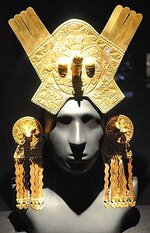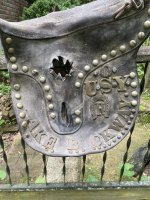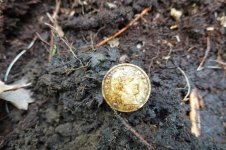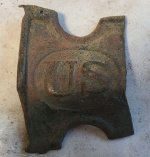Crow
Silver Member
- Jan 28, 2005
- 3,334
- 9,323
- Detector(s) used
- ONES THAT GO BEEP! :-)
- Primary Interest:
- Other
Metallurgy flourished over all of the Americas.
The metal working tradition in the Americas developed over 3000 years to the 16th century when cultures began too disintegrate from the Spanish Conquest.
The oldest known metal objects found so far was in Andhuaylas region in Southern Peruvian highlands. Small hammered pieces of tools used in the manufacture of gold ware by professor Goldman in 1974. The date of these items was 1500 BC . The next known established dates of metalworking was from the Chavin culture of northern Peru. Which was about 800 BC. Items of nose pieces crowns and other objects.
The earliest date of metal working is first century BC in Columbia. Gold production in Northern Columbia and Central America earliest evidence dated was between 300 and 400 BC.. How at present the evidence of metal working in Mexico was around 700 AD. It is believe metalworking was introduced into Mexico via the south at a much later stage.
Each different metalworking zone developed its owns styles and different techniques of metal production.
Hammered and repoussed pieces predominate in Peru and Ecuador. Both in stylistic and technical aspects can also be seen in Columbia and the isthmus. Both Areas for example used as IPUK rightly called Tumbaga a copper gold Alloy. 70% Copper and 30% gold in used in some objects. Some more High status object was more purer gold was used.

Mexican metallurgy is really different from the south once once they discovered the process they developed metalworking and style distinctly different from their southern neighbors. Columbia has the greatest variation of metal working processes and styles by various Indian cultures. In Colombian coastal regions in there was influence of the use of platinum. However despite the regional variations there is some events that knowledge of metal working evolved over time with strong mutual contacts that influence one another.
Crow
The metal working tradition in the Americas developed over 3000 years to the 16th century when cultures began too disintegrate from the Spanish Conquest.
The oldest known metal objects found so far was in Andhuaylas region in Southern Peruvian highlands. Small hammered pieces of tools used in the manufacture of gold ware by professor Goldman in 1974. The date of these items was 1500 BC . The next known established dates of metalworking was from the Chavin culture of northern Peru. Which was about 800 BC. Items of nose pieces crowns and other objects.
The earliest date of metal working is first century BC in Columbia. Gold production in Northern Columbia and Central America earliest evidence dated was between 300 and 400 BC.. How at present the evidence of metal working in Mexico was around 700 AD. It is believe metalworking was introduced into Mexico via the south at a much later stage.
Each different metalworking zone developed its owns styles and different techniques of metal production.
Hammered and repoussed pieces predominate in Peru and Ecuador. Both in stylistic and technical aspects can also be seen in Columbia and the isthmus. Both Areas for example used as IPUK rightly called Tumbaga a copper gold Alloy. 70% Copper and 30% gold in used in some objects. Some more High status object was more purer gold was used.

Mexican metallurgy is really different from the south once once they discovered the process they developed metalworking and style distinctly different from their southern neighbors. Columbia has the greatest variation of metal working processes and styles by various Indian cultures. In Colombian coastal regions in there was influence of the use of platinum. However despite the regional variations there is some events that knowledge of metal working evolved over time with strong mutual contacts that influence one another.
Crow






